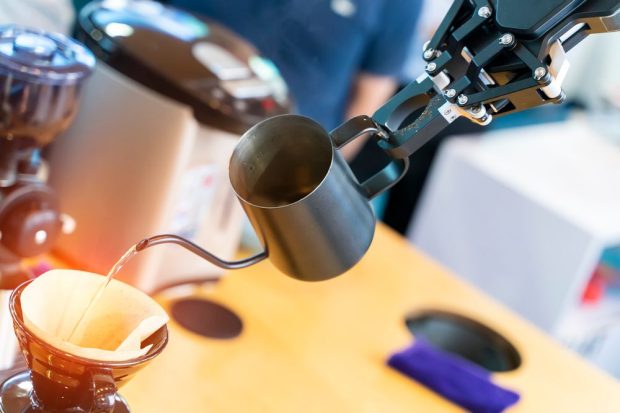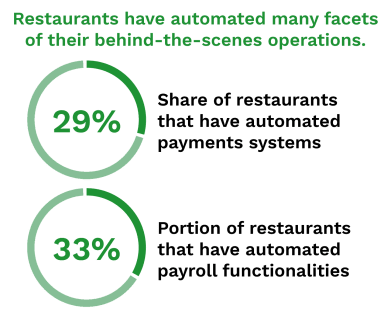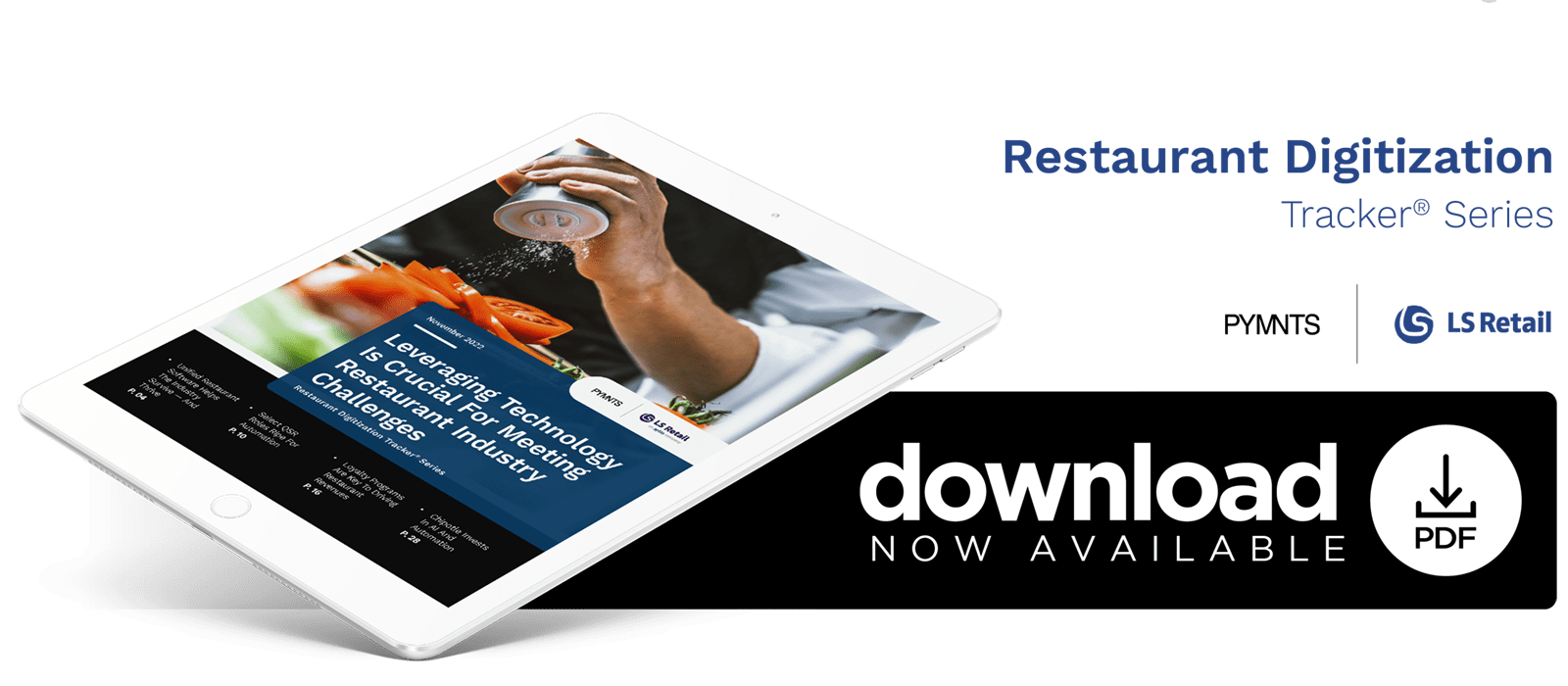PYMNTS Intelligence: New Technology Becomes Table Stakes as the Restaurant Industry Evolves

The industry continues its rapid recovery after a swift tumble during the first years of the pandemic, as expressed by several different metrics. The food service industry is projected to hit $898 billion in sales this year, for example, and is expected to add 200,000 roles annually through 2030.

This is not to say that everything is going well, however. Restaurant owners have expressed difficulty finding new employees to fill these roles, for example, and supply chain issues and inflation have cut into profits. Increasing revenue despite these challenges will require investing in new ordering, payment and automation technology.
Automation and data-driven ordering are some of the most promising restaurant technologies.
Improving margins to meet modern industry challenges will likely necessitate some form of automation. This automation can include replacing front-of-house workers such as drive-thru attendants or baristas, but the biggest bang for restaurants’ buck would come from automating back-of-house functions, including inventory tracking, ordering and payments.
Currently, more than 75% of eateries use three or more automated tools. Automated payroll, payments and pricing are some of the obvious use cases, with nearly one-third of restaurants surveyed by PYMNTS saying they had mostly or fully automated these operations.
This need for automated and unified restaurant functionalities has been recognized by providers worldwide, driving the restaurant management software market to explode in value. Experts project that this industry will hit $17.3 billion by 2031, a compound annual growth rate (CAGR) of 15.9% in the next decade.  Among other functions, these technologies have been shown to improve inventory ordering accuracy, reducing the amount of food that goes to waste and improving restaurant margins.
Among other functions, these technologies have been shown to improve inventory ordering accuracy, reducing the amount of food that goes to waste and improving restaurant margins.
Loyalty programs are also crucial to driving revenue.
These can take many forms, ranging from point-based reward systems to surprise-and-delight models that randomly and occasionally offer customers free menu items. Mobile ordering systems are now table stakes for QSRs around the world, so many customers decide where to eat based on what rewards they can attain.
PYMNTS research found that 24% of table-service restaurant customers and 21% of QSR customers said that loyalty programs were very or extremely important when choosing a restaurant, with these numbers increasing among younger generations. Loyalty programs are particularly effective at encouraging customers to make return visits to restaurants, even if the restaurants are not offering a reward at the particular time of the decision.

